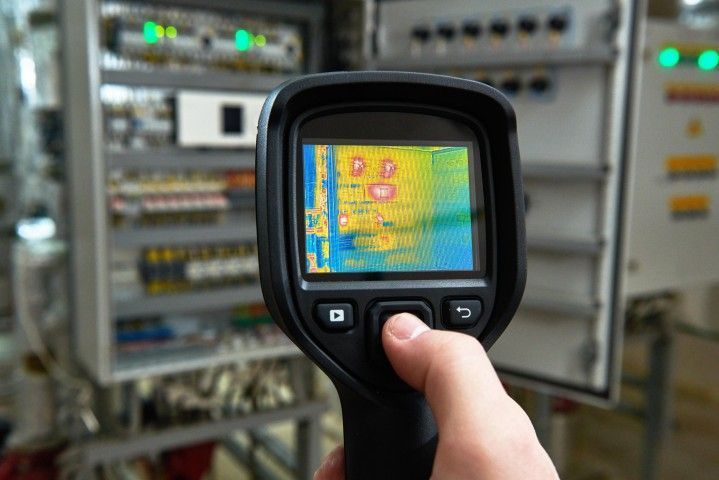What is LVD Test and How is It Done?
Why is the LVD Test Required?
LVD tests are required to ensure that electrical devices do not adversely affect human and living health. The main tests and inspections included in LVD test are leakage current test, earth continuity test, high voltage test, insulation resistance test, mechanical tests, temperature rise test, flammability tests, IP tests, inspections and documentation control. LVD testing is required to check for possible damage to live health of 50-1000 V AC and 75-1500 V DC electrical devices.
How is the LVD Test Performed?
When performing LVD test, it is necessary to choose the standard suitable for the purpose of the electrical device and the usage environment. All the tests and examinations that are included in the standard and applicable to the product should be examined one by one during the LVD test.
Before the LVD test, if there are environmental conditions and preconditioning processes in the standard, appropriate environmental conditions must be ensured before the test.
Before starting LVD test, single line diagram, user manual, label, voltage and frequency declaration values of the device should be examined. In addition, if there are critical components in the device, test reports or conformity certificates must be checked before LVD test.
The LVD test determines whether all the standard requirements of the product have been met with the relevant test, inspection and documentation control.
What are the Test Levels During the LVD Test?
During the LVD test, the test levels can vary depending on the product, the purpose of use, the environment of use, the rated voltage values, the enclosure structure of the product, the degree of insulation and many other factors.
If we look at the basic applications of the LVD tests;
- In the glow wire test, the level is usually as follows; insulating materials in contact with electricity are tested at 960 degrees, and insulating materials without electrical contact are tested at 650 degrees.
- In the ball pressure test, insulating materials without electrical contact are kept in the test cabinet at 75 degrees, and insulating materials with electrical contact in 125 degrees. The track diameter formed at the end of the ball pressure should not exceed 2mm.
- The manufacturer's declaration is essential in the IP test. Up to IP 69 level, tests are performed according to the manufacturer's declaration.
- The manufacturer's declaration is essential in the IK test. Up to IK 10 (20 Joule) level, tests are performed according to the manufacturer's declaration.
- The dielectric test may vary depending on the product and the rated voltage values. For example, while the machines are 1000 V AC, the electrical panels are 1890 V AC, 4000 V AC can be applied to the reinforced insulated part of the electrical medical devices that contact the patient.
- While the earth continuity test is generally applied at 10 or 25 A levels, the limits that should not exceed are values such as 0,1 ohm or 0,2 ohm, depending on the product.
- In the temperature rise test, although the test level is based on the manufacturer's declaration, there are limits that should not exceed the standard of each product. After the temperature has entered the regime, that is, it becomes stable, the relevant controls are made.
- In insulation resistance tests, the test level is usually 500 V DC. Although the limits vary according to the product, the apparent value is expected to be greater than 1 Megaohm.
As a result, the structure, place of use and rated voltage values of the product are of great importance in determining the levels while performing LVD test.
What are the Negative Experiences During the LVD Test?
During the LVD test, there may be negativity in many points from critical electrical tests to mechanical tests, from examinations to documentation control. Not only in tests, but also because of a symbol that is not on the label or the ground wire is not yellow-green, negativity may occur during the LVD test. In order to reduce the negativities to a minimum, it is necessary to obtain and examine the standard for the product that will take the LVD test while still in the R&D phase.
Some test that issue negativity during LVD test;
During the LVD test, the dielectric test is the most important test that the devices isuue the most negativity. In the dielectric test, the close proximity of the live ends of the components causes discharges. At the beginning of the measures to be taken for this test, it is necessary to pay attention to the isolation range and the distance of the superficial leakage path lengths.
Another negativity experienced during the LVD test is the non-flammability tests. The manufacturer should examine the MSDS form of the insulating material used, it should use V0 additive material.
Another negativity that can be encountered during the LVD test is in the earth continuity test. The manufacturer should check the conductive parts that will provide continuity before this test. If there is a paint or other insulating part to prevent continuity, contact should be provided. Most importantly, it is necessary to use a ground wire of suitable cross section.
Another drawback that may be encountered during the LVD test is in the temperature rise test. If there are not enough openings to discharge the heated air, this test may cause negativities. While taking precautions for this test, it is absolutely necessary to leave the necessary openings for the heat discharge and we should try not to place components on the components that emit excess heat as the heated air rises. If we cannot meet these requirements with natural cooling, we must use forced cooling, such as a fan module.

